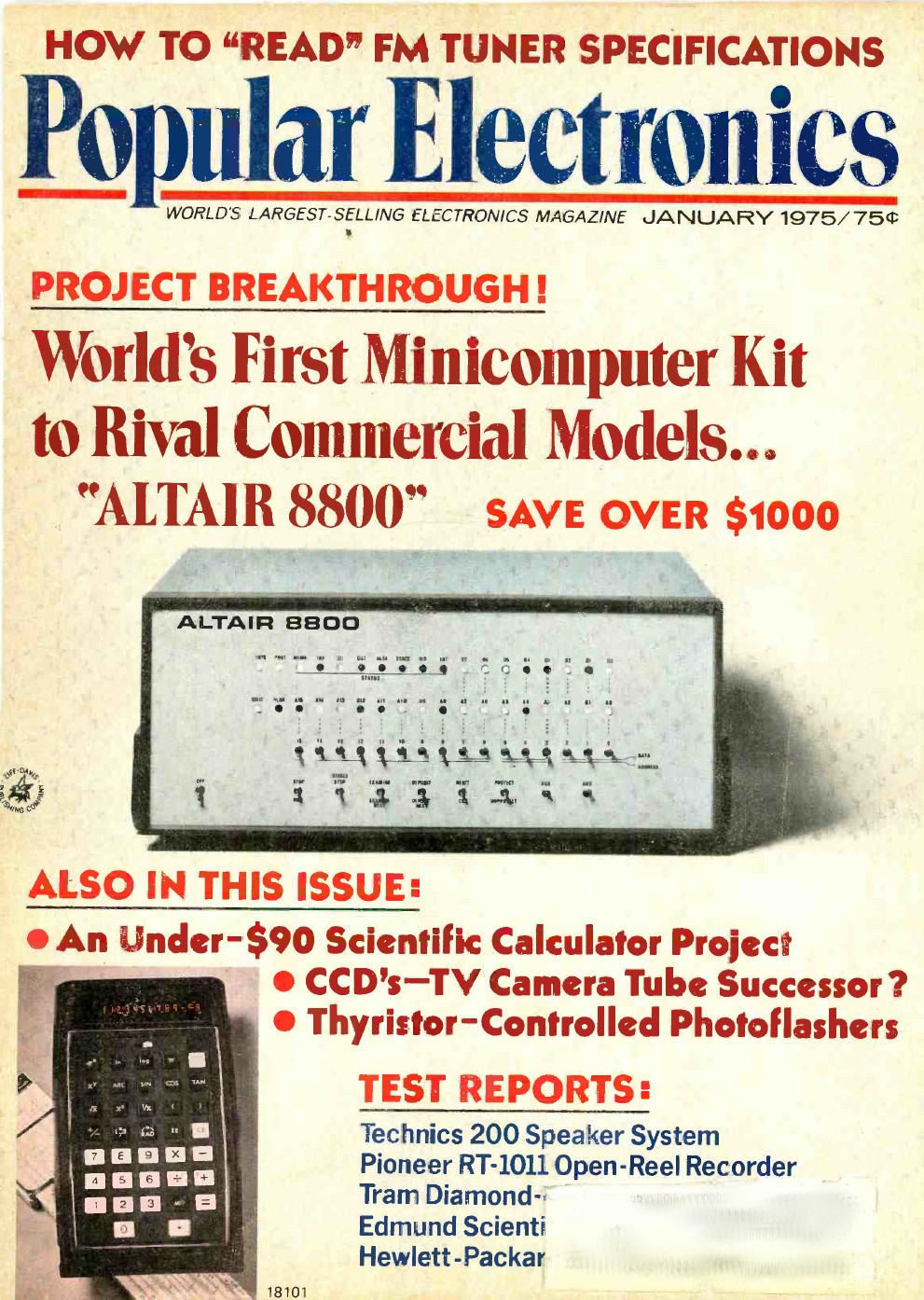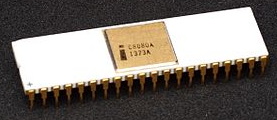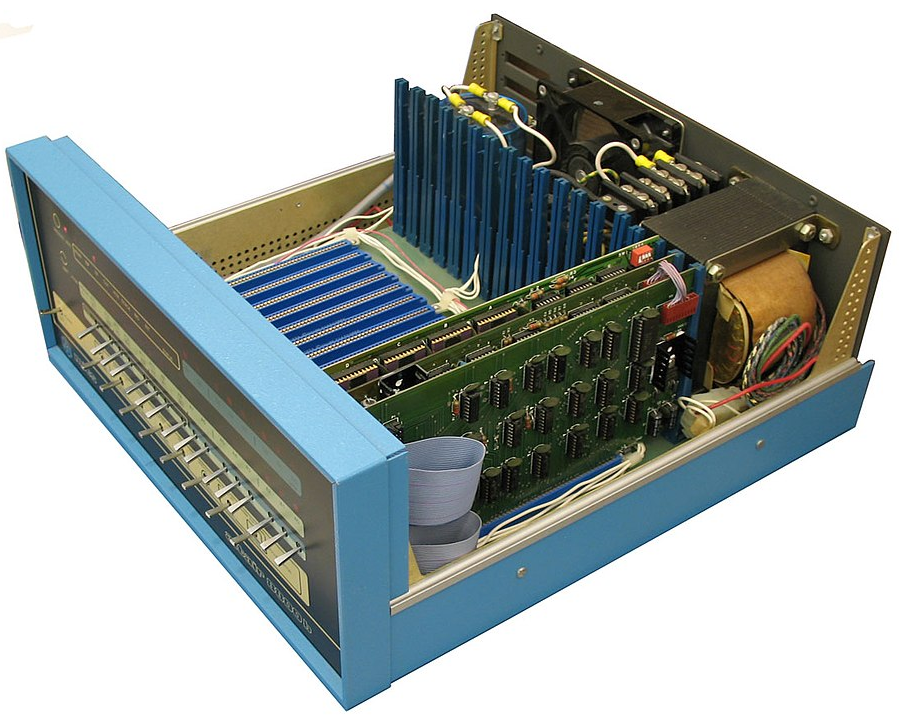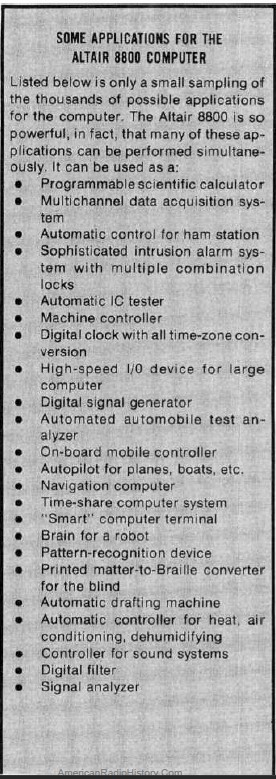

1975
Altair 8800 Computer
The computer that changed the world

I’m going totally geek here and those of you non-technical might skip over but section contains important details that shaped the direction of my life.
I had been reading Popular Electronics for a dozen years and had bought and built several of the kit projects that had been in the magazine. In the previous few years, the articles and projects in Popular Electronics were increasingly more about digital electronics, but nothing like this. It shocked the electronics industry, the computer industry, the hobbyist industry, it even was on national news. The cover story in the January 1975 issue of Popular Electronics was the Altair 8800 home computer, an event which would not only change the computer industry, but the world. The concept of personal computers didn’t exist at the time, other than mainframes, the smallest computers were “minicomputers” which were the size of a large suitcase, typically mounted it six foot tall computer racks, and costing tens of thousands of dollars. At the time, minicomputers were only sold by a few computer companies like Digital Equipment Corporation (DEC), Hewlett Packard (HP) and, of course, IBM. Yet, here Popular Electronics had a full functional computer for under $400 and much like the minicomputers of the time had a full front panel with lots of switches and lights.

Intel 8080 Microprocessor
Intel 8080 and Memory
What made the Altair possible was the Intel 8080 microprocessor that had come out in 1974 and cost $360 a chip, the price was said to be a play on the IBM System 360 mainframe. Yeah, a computer on a chip was as powerful as the mainframe that took a whole room. With a 16-bit address capability, it could access a whopping 64 KB of memory, although the Altair only came with 256 bytes, yes that’s right, 256 bytes. Additional memory could be added by adding memory boards via expansion cards.
 Slots
inside Altair with three cards installed
Slots
inside Altair with three cards installed
One of the features that made the Altair a success was its open bus design allowing for a hobbyist or company to design and build computer cards that could plug into the computer that would expand its capabilities. The Altair came with 17 empty slots for additional computer cards. One of the main problems with the Altair was memory. In 1975 it would take all 17 slots filled with memory cards to reach the 8080’s 64 KB maximum.
In March MITS (the company that made the Altair) offered additional memory cards, a static memory card that had 1024 bytes at $103 kit ($134 assembled) and a dynamic memory card with 4096 bytes for $264 kit ($338 assembled). For those not knowing the difference between static and dynamic, static memory retained its memory when the power was turned off while dynamic memory lost its memory when power was off. This would change over the next few years when, following Moore’s Law, computer memory grew increasing smaller and cheaper, with 16 KB boards coming out followed by 32KB, 64 KB and so on.
Peripherals
The only way to input a program into the Altair were the switches on the front panel, a long and laborious process which is why static memory was preferred. Imagine sitting an hour flipping switches to enter a program into memory then have the power go off and lose it all. What was needed were peripheral devices, i.e., devices that would connect to the computer to input and output data, like the punch card readers, printers, terminals and magnetic tape like on the mainframe.
In the article on the Altair came out the editor added a note saying, “At this writing, a number of different peripheral devices are in various stages of design or undergoing tests.” By the end of the year, you could buy cards that allowed the computer to talk to a teletype machine [picture], printer, cassette tape recorder and many more. In March you could get from MITS a computer Audio Cassette Tape card ($103) that would allow you to read and write computer programs and data to a standard cassette tape [photo my cassette tape]. They also offered serial ($138) and parallel interface ($92) cards which allowed the computer to communicated with computer terminals and printers. Other companies begin offering cards and peripherals, in February SWTPC came out with the CT-1024 “Computer Terminal” which could display 16 lines of 32 characters per line on a standard TV for $260. Yes, the computer was only 400 dollars, but you had to spend another $400 or more to make it useful. So what could you do with it?
Applications
 From
first artical about the Altair
From
first artical about the Altair
When it came to programs, or applications there were none. MITS offered some suggestions, programmable scientific calculator, digital signal generator, navigation computer, brain for a robot to name a few, but you could not just go out and buy any. There wasn’t even a operating system for the computer. That would change in the following year when the CP/M operating system came out.
Overall, I found the Altair computer to be interesting, fascinating, I studied every detail of it, but there didn’t seem to be much it could do other than make the lights on the front flash in patterns. This would change in the following months.
Spring
I finished winter quarter
making a D in Electronics but managed to get a B in the associated Lab.
I was thinking more that Electrical Engineering wasn’t for me but with
all the excitement about microprocessors and the Altair 8800 home
computer, for the spring quarter beginning the end of March I decided to
take the Electrical Engineering course EE-691 Microprocessors.
April 1975, with the fall of Saigon to north Vietnam, the Vietnam war
was over.
Updated: 01-15-2023